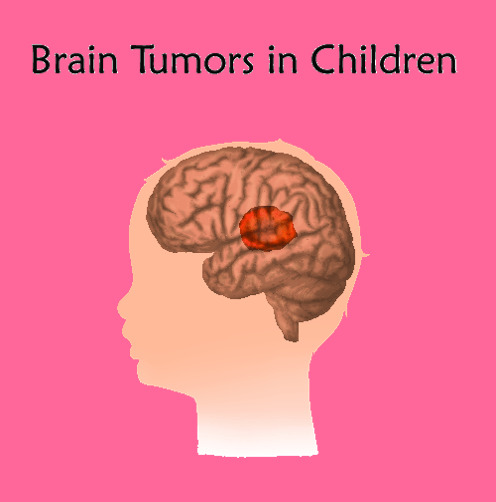An abnormal collection or growth of cells in the child’s brain is called a paediatric brain tumour. Many different paediatric brain tumours exist – some are noncancerous (benign) and some are cancerous (malignant).
Treatment for brain tumours in children is evolving and is typically quite different from treatment for adult brain tumours.
Types of brain tumours
Glioma is a type of tumour that occurs in the brain and spinal cord. Gliomas begin in the glial cells (supportive cells in the brain) that surround nerve cells and help them function.
Three major types of gliomas are:
-
Astrocytomas – These are the most common type of glioma, accounting for about half of all childhood brain tumours. They are most common in children between the ages of 5 and 8.
-
Astrocytomas are further divided into:
- Pilocytic astrocytoma (Grade 1): This slow-growing tumour is the most common brain tumour in children.Pilocytic astrocytoma is often cystic (fluid-filled). Surgical removal is often the only treatment necessary when this tumour develops in the cerebellum. Pilocytic astrocytomas growing in other locations may require different therapies.
- Diffuse astrocytoma (Grade 2): This brain tumour infiltrates the surrounding normal brain tissue, making complete surgical removal difficult.
- Anaplastic astrocytoma (Grade 3): This brain tumour is malignant and may require a combination of treatments.
- Glioblastoma multiforme (Grade 4): This is the most malignant type of astrocytoma. It grows rapidly and often causes pressure in the brain. These tumours require a combination of treatments.
-
Some Astrocytomas tend to occur at certain specific areas of the brain in children
- Brain stem gliomas are low-grade glioma in the brain stem. Tumours in this location can be very challenging to treat. Most of these tumours are located in the middle of the brainstem and cannot be removed through surgery, particularly the diffuse intrinsic pontine glioma. Surgery can treat a few brainstem tumours which are favourably for it. These are often treated with non-surgical methods.
- Optic nerve gliomas: These tumours are found in or around the optic nerves that send messages from the eyes to the brain. Optic nerve gliomas are frequently seen in children with Neurofibromatosis, a genetic disorder affecting the skin and nervous system. They can cause vision loss and hormone problems because of their frequent location near the base of the brain. In addition, these are typically difficult to treat due to the surrounding sensitive brain structures.
-
- Ependymomas – are another kind of glioma that forms from the cells that make, support, nourish, and line the ventricles (open areas of the brain’s interior that cerebrospinal fluid flows through). Types of Ependymoma – Anaplastic ependymoma, myxopapillary ependymoma and Subependymoma
- Oligodendrogliomas- including Oligodendroglioma (Grade 1 -2), Anaplastic Oligodendroglioma (Grade 3)
Other Brain Tumours –
- Craniopharyngioma is a rare type of benign brain tumour. It begins near the pituitary gland, which secretes hormones that control many body functions. As it slowly grows, it can affect the part of the pituitary gland and optic nerve, causing visual dysfunction. Craniopharyngioma can occur at any age, but it occurs most often in children and older adults.
- Embryonal tumours of the central nervous system are cancerous tumours that start in the brain’s foetal (embryonic) cells Embryonal tumours can occur at any age, but most often occur in babies and young children.
Types of embryonal tumours include:
- Medulloblastomas –This is the most common type of fast-growing embryonal cancerous tumour that starts in the cerebellum. The cerebellum is involved in muscle coordination, balance and movement.
- Embryonal tumours with multilayered rosettes (ETMRs) – These are rare cancerous tumours typically occurring in infants and young children. These aggressive tumours often start in the largest part of the brain, called the cerebrum, which controls thinking and voluntary movement.
- Medulloepitheliomas –These rare, fast-growing cancerous tumours typically occur in the brain or spinal cord of infants and young children.
- Atypical teratoid/rhabdoid tumours – These rare, cancerous tumours are most often found in the cerebellum of infants and children under three years of age.
- Choroid plexus tumours are in the choroid plexus — the part of the brain within the ventricles that makes cerebrospinal fluid. These tumours can cause a buildup of cerebrospinal fluid, resulting in Hydrocephalus. They can be benign or malignant and often require surgery as part of the treatment.
- Germ cell tumours: These tumours can be benign or malignant. They grow from germ cells, which form from eggs in women and sperm in men. During the normal development of an embryo and foetus, germ cells usually become eggs or sperm.
- Dysembryoplastic neuroepithelial tumours: These rare, benign tumors grow in the tissues covering the brain and spinal cord and often cause seizures
- Pineoblastoma – It is a rare, aggressive type of cancer that begins in the cells of the pineal gland cells, located in the brain’s centre. It produces a hormone (melatonin) that plays a role in your natural sleep-wake cycle. It can occur at any age but tends to occur most often in young children.


